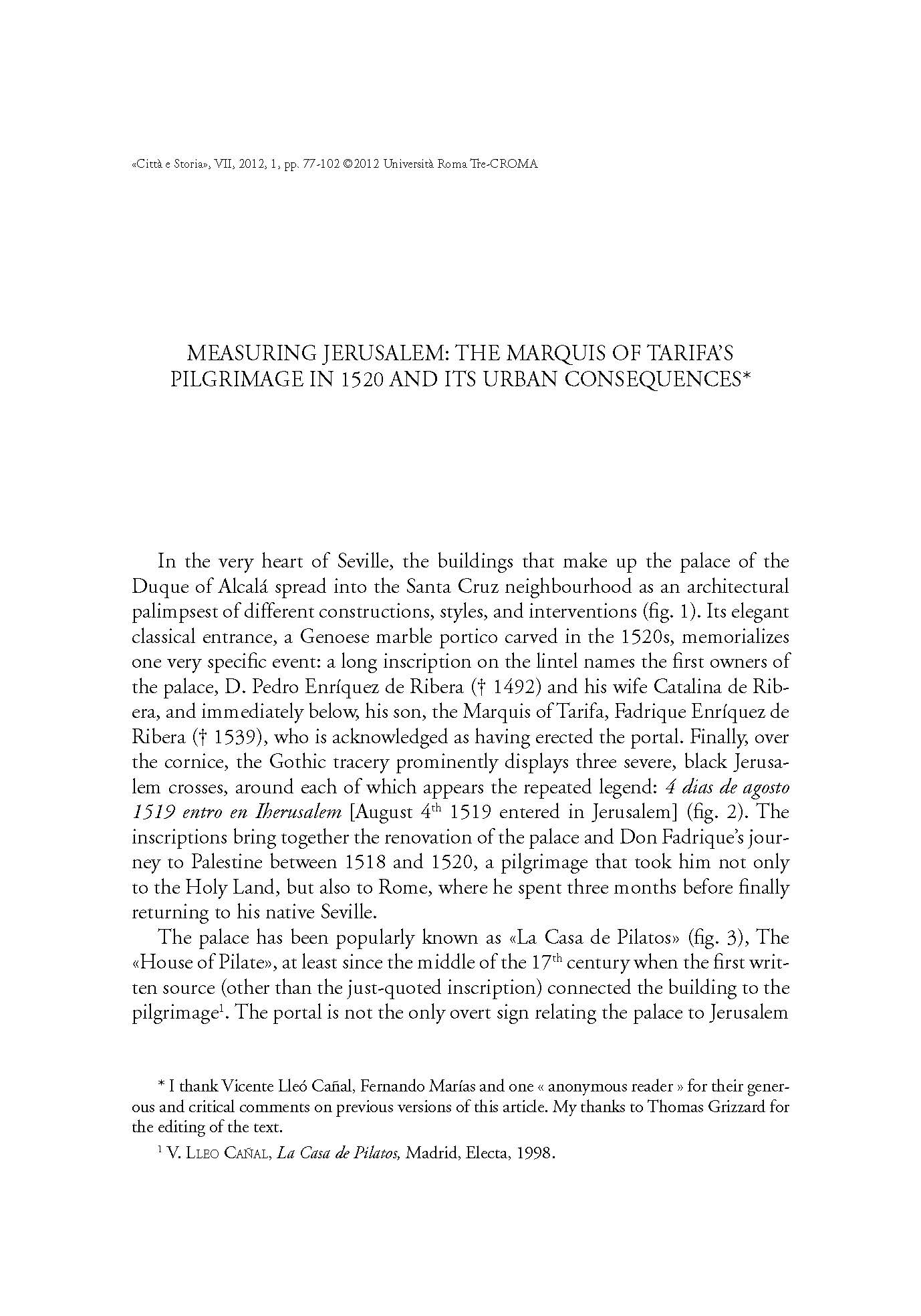Measuring Jerusalem: the Marquis of Tarifa’s Pilgrimage in 1520 and its Urban Consequences
6,00 €
The travel of Don Fadrique Enriquez de Ribera to Jerusalem in 1518-20 has a twofold importance: on the one hand, his account of the journey is one of the most detailed descrip- tions of a Spanish pilgrim visit to Jerusalem in the Early Modern period. Though it does not give any kind of “visual” or ekphrastic description of the city, nevertheless, it does give a very precise report of the measures of the most important buildings he visited, and also a numerical account of the distances that separated Jerusalem’s sanctuaries. The second reason for the importance of Don Fadrique’s travel relies on the impact it had once he had returned to Sevile. Not only did the Marquis bring from his pilgrimage to Jerusalem a remarkable col- lection of Roman antiquities, or the contracts with the Genoese marmorarii, more important is that Don Fadrique tried to make a symbolic or spiritual transfer of his visit to Jerusalem to Seville’s urban design: his palace was built at the origin of a Via Crucis made out of twelve estaciones marked with tile inscriptions on the street’s walls. The estaciones reproduced, ex- actly, the distance of Jesus way from the Pretorium to the Calvary, a via passionis that ended in a little temple known as the “Cruz del Campo”. The special characteristics of Don Fadrique’s “non-visual” description of Jerusalem will be analysed together in this paper as the heritage of a still alive pre-typographic culture.
The travel of Don Fadrique Enriquez de Ribera to Jerusalem in 1518-20 has a twofold importance: on the one hand, his account of the journey is one of the most detailed descrip- tions of a Spanish pilgrim visit to Jerusalem in the Early Modern period. Though it does not give any kind of “visual” or ekphrastic description of the city, nevertheless, it does give a very precise report of the measures of the most important buildings he visited, and also a numerical account of the distances that separated Jerusalem’s sanctuaries. The second reason for the importance of Don Fadrique’s travel relies on the impact it had once he had returned to Sevile. Not only did the Marquis bring from his pilgrimage to Jerusalem a remarkable col- lection of Roman antiquities, or the contracts with the Genoese marmorarii, more important is that Don Fadrique tried to make a symbolic or spiritual transfer of his visit to Jerusalem to Seville’s urban design: his palace was built at the origin of a Via Crucis made out of twelve estaciones marked with tile inscriptions on the street’s walls. The estaciones reproduced, ex- actly, the distance of Jesus way from the Pretorium to the Calvary, a via passionis that ended in a little temple known as the “Cruz del Campo”. The special characteristics of Don Fadrique’s “non-visual” description of Jerusalem will be analysed together in this paper as the heritage of a still alive pre-typographic culture.

